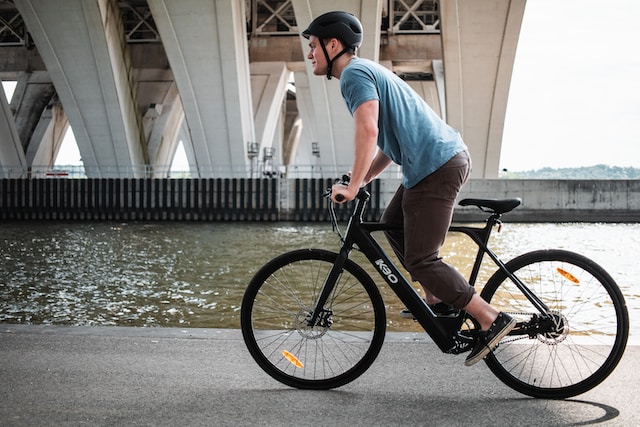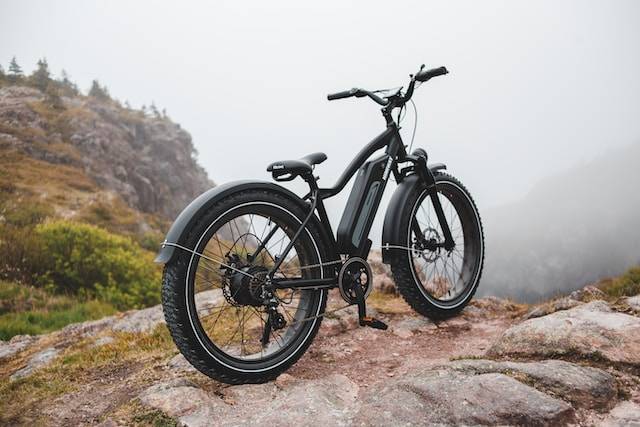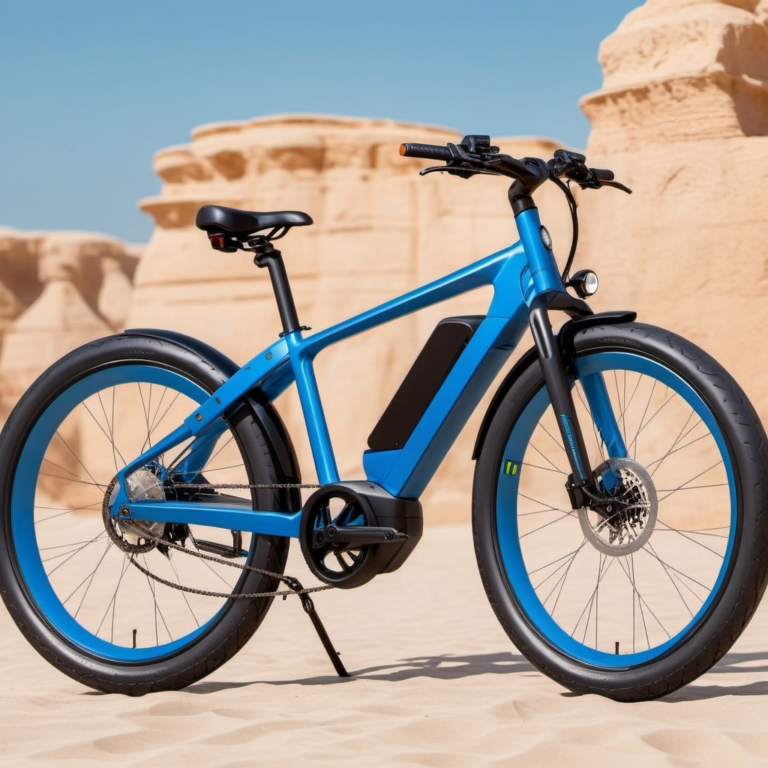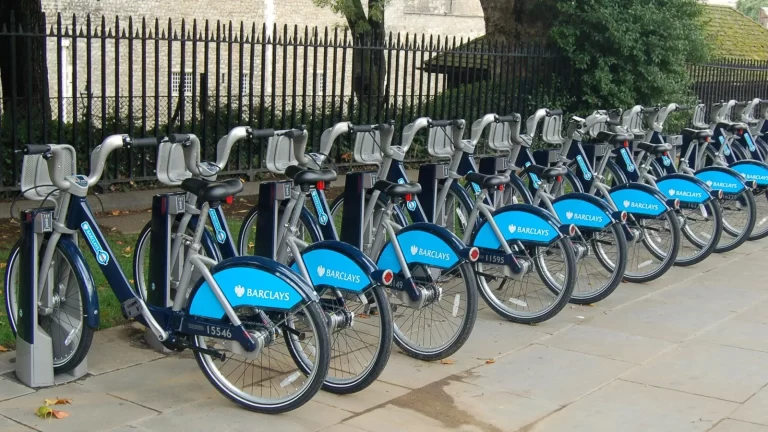How Does the Cost of Owning and Operating an Ebike Compare to That of a Regular Bicycle or a Car?
In recent years, as the global conversation around sustainable living and eco-friendly transportation options has gained momentum, one particular mode of travel has emerged as a frontrunner: the eBike. This surge in popularity isn’t merely a passing trend but a reflection of a growing societal shift towards more sustainable and cost-effective means of commuting and leisurely travel.
In this blog post, we delve into the intricate world of transportation economics, specifically focusing on the comparative costs associated with owning and operating three distinct modes of travel: eBikes, regular bicycles, and cars. While traditional bicycles have long been hailed as a cost-effective and environmentally friendly option, the advent of eBikes has added a new dimension to this conversation, offering an enticing blend of pedal power and electric assistance.
The allure of eBikes lies not only in their ability to provide an eco-conscious alternative to gas-guzzling vehicles but also in their versatility and accessibility. As more individuals seek ways to navigate urban landscapes efficiently and sustainably, the demand for eBikes has soared, prompting a deeper exploration into their financial implications.
Through this exploration, we aim to shed light on the tangible benefits and potential drawbacks of each mode of transportation, empowering readers to make informed decisions that align with their financial goals and environmental values. By examining factors such as initial purchase price, maintenance expenses, and long-term savings potential, we endeavor to provide a comprehensive understanding of the economic landscape surrounding eBikes, traditional bicycles, and cars.
Join us as we learn about the economics of transportation, where affordability, sustainability, and practicality intersect, paving the way for a more informed and conscientious approach to personal mobility.
Key Takeaways
- Ownership and operating costs vary significantly between eBikes, regular bicycles, and cars.
- eBikes offer a balance between affordability and convenience compared to bicycles and cars.
- Long-term savings potential with eBikes can outweigh the initial investment.
- Environmental considerations play a crucial role in the cost analysis.
- Maintenance costs for eBikes are generally lower than those for cars.
- eBikes provide health benefits while saving money on commuting expenses.
- Personal preferences and lifestyle factors should also influence the decision-making process.
Understanding the Costs
When considering the financial implications of transportation options, it’s essential to dissect the various cost components associated with owning and operating eBikes, regular bicycles, and cars. Each mode of travel comes with its unique set of expenses, which can significantly impact the overall affordability and practicality for individuals.
1. Initial Purchase Price
- eBikes: The initial cost of purchasing an eBike typically ranges from several hundred to several thousand dollars, depending on factors such as brand, features, and quality of components.
- Regular Bicycles: Traditional bicycles generally have a lower initial purchase price compared to eBikes, making them an attractive option for budget-conscious individuals.
- Cars: The initial purchase price of a car varies widely based on factors such as make, model, year, and additional features, with costs ranging from several thousand to tens of thousands of dollars or more.
2. Maintenance Expenses
- eBikes: While eBikes may require occasional maintenance, such as brake adjustments and tire replacements, they typically have lower maintenance costs compared to cars. Routine maintenance tasks for eBikes often include battery care, chain lubrication, and brake checks.
- Regular Bicycles: Traditional bicycles generally have minimal maintenance expenses, primarily consisting of occasional tune-ups, tire replacements, and lubrication.
- Cars: Maintaining a car can be costly, with expenses including oil changes, tire rotations, brake repairs, and engine tune-ups. Additionally, more significant repairs such as transmission or engine overhauls can incur substantial costs.
3. Fuel Costs
- eBikes: eBikes offer significant savings in fuel costs since they primarily rely on electric power assistance, which can be recharged inexpensively at home or at charging stations.
- Regular Bicycles: Traditional bicycles do not require fuel, making them the most cost-effective option for short to moderate distance travel.
- Cars: Fuel costs can be a significant expense for car owners, especially considering fluctuating gasoline prices and the fuel efficiency of the vehicle.
4. Insurance Premiums
- eBikes: In many regions, eBikes do not require insurance coverage. However, some riders may choose to purchase liability insurance for added protection.
- Regular Bicycles: Traditional bicycles typically do not require insurance coverage.
- Cars: Car insurance premiums can vary depending on factors such as the driver’s age, driving record, location, and the type of coverage selected. Comprehensive insurance coverage is often required by law in many jurisdictions.
5. Depreciation
- eBikes: eBikes may experience depreciation over time, particularly as newer models with advanced features and technologies enter the market.
- Regular Bicycles: Traditional bicycles may depreciate in value over time, but the depreciation rate is generally lower compared to cars.
- Cars: Cars depreciate rapidly, with their value decreasing significantly as they age and accumulate mileage. Depreciation can be a substantial consideration for car owners, especially when reselling or trading in their vehicles.
Understanding these cost components is crucial for individuals weighing their transportation options. By evaluating factors such as initial purchase price, maintenance expenses, fuel costs, insurance premiums, and depreciation, individuals can make informed decisions that align with their financial priorities and lifestyle preferences.
RELATED CONTENT – Frame Bike Rack for Easy Transport
RELATED CONTENT – Electric Bike Buying Guide
Cost Comparison: eBike vs. Regular Bicycle
When comparing the ownership costs of eBikes and regular bicycles, it’s essential to consider not only the initial purchase price but also the long-term expenses associated with maintenance, repair, and convenience. While both options offer sustainable and economical modes of transportation, they each have distinct characteristics that can influence their cost-effectiveness over time.
1. Initial Purchase Price
- eBikes: eBikes generally have a higher initial purchase price compared to regular bicycles due to the added cost of electric components such as motors and batteries.
- Regular Bicycles: Traditional bicycles typically have a lower initial purchase price since they lack the electric components found in eBikes.
2. Maintenance and Repair
- eBikes: While eBikes may have higher initial maintenance costs due to their electric components, they often require less maintenance over time compared to regular bicycles. The electric motor assists with pedaling, reducing strain on the rider and potentially decreasing wear and tear on the bike.
- Regular Bicycles: Traditional bicycles generally have lower initial maintenance costs since they lack complex electric components. However, they may require more frequent maintenance, such as brake adjustments, chain lubrication, and tire replacements, depending on usage.
3. Convenience
- eBikes: eBikes offer the convenience of electric assistance, allowing riders to tackle hilly terrain or cover longer distances with less effort. This can be particularly advantageous for commuters or individuals with physical limitations.
- Regular Bicycles: Traditional bicycles rely solely on pedal power, requiring riders to exert more effort, especially when navigating challenging terrain or traveling long distances. While some riders enjoy the physical exercise, others may find it less convenient, particularly for daily commuting or errands.
4. Long-Term Cost-Effectiveness
- eBikes: Despite their higher initial purchase price, eBikes may offer greater long-term cost-effectiveness due to reduced maintenance requirements and potential savings in time and energy. Additionally, the electric assistance can extend the range of travel, making eBikes a practical option for various commuting and recreational purposes.
- Regular Bicycles: Traditional bicycles may be more cost-effective in the short term due to their lower initial purchase price and minimal maintenance costs. However, frequent riders may incur higher maintenance expenses over time, potentially offsetting the initial savings.
By carefully considering factors such as initial purchase price, maintenance and repair costs, and convenience, individuals can determine which option best suits their needs and budget. Whether opting for the electric assistance of an eBike or the simplicity of a regular bicycle, both provide sustainable and enjoyable means of transportation for riders of all backgrounds and preferences.
RELATED CONTENT – Electric Bikes for Teens Guide
RELATED CONTENT – Affordable Electric Bikes Under $500
Cost Comparison: eBike vs. Car
When weighing the expenses associated with owning and operating eBikes versus cars, it’s crucial to delve into various factors that contribute to the overall cost-effectiveness of each mode of transportation. While cars offer convenience and versatility, eBikes present a compelling alternative that can significantly impact both financial and environmental considerations.
1. Fuel Savings
- eBikes: eBikes offer substantial fuel savings compared to cars since they primarily rely on electric power assistance. Riders can recharge their eBike batteries inexpensively at home or at charging stations, eliminating the need for costly gasoline or diesel fuel.
- Cars: Cars require regular refueling with gasoline or diesel fuel, which can be a significant ongoing expense, particularly as fuel prices fluctuate. The fuel consumption of a car depends on factors such as the vehicle’s make and model, driving habits, and road conditions.
2. Insurance Premiums
- eBikes: In many regions, eBikes do not require insurance coverage, resulting in potential savings for riders. However, some individuals may choose to purchase liability insurance for added protection in case of accidents or theft.
- Cars: Car insurance premiums can be a substantial expense for car owners, particularly in areas with high accident rates or theft rates. Factors such as the driver’s age, driving record, location, and the type of coverage selected can influence insurance costs.
3. Parking Fees
- eBikes: eBikes typically do not require designated parking spaces, offering riders greater flexibility and convenience when traveling in urban or congested areas. Riders can park their eBikes at bicycle racks or secure them with bike locks at various locations.
- Cars: Parking fees can add up quickly for car owners, especially in densely populated cities or areas with limited parking availability. Costs may include metered parking, parking garage fees, or residential parking permits.
4. Environmental Impact
- eBikes: eBikes have a significantly lower environmental impact compared to cars since they produce zero emissions during operation. By choosing eBikes over cars for daily commuting or errands, individuals can reduce their carbon footprint and contribute to cleaner air and a healthier environment.
- Cars: Cars contribute to air pollution and greenhouse gas emissions, primarily through the combustion of fossil fuels. The environmental impact of cars extends beyond carbon dioxide emissions, encompassing pollutants such as nitrogen oxides, particulate matter, and volatile organic compounds.
By contrasting these expenses associated with owning and operating eBikes and cars, individuals can make informed decisions that align with their financial goals and environmental values. While cars offer convenience and flexibility, eBikes provide a sustainable and cost-effective alternative that can benefit both individuals and communities alike.
RELATED CONTENT – Best Bike Racks for Electric Bikes
RELATED CONTENT – How Fast Can Electric Bikes Go?
Long-Term Financial Implications
When considering the long-term financial implications of transportation options, choosing eBikes over regular bicycles or cars can offer several significant benefits. Beyond the initial investment, eBikes provide a compelling alternative that can result in substantial savings and financial advantages over time.
1. Reduced Fuel Consumption
- eBikes: One of the most significant long-term financial benefits of choosing eBikes is the reduced fuel consumption. Since eBikes primarily rely on electric power assistance, riders can significantly lower their fuel expenses compared to cars. By charging eBike batteries at home or at charging stations, riders can enjoy cost-effective transportation without the ongoing expense of gasoline or diesel fuel.
- Regular Bicycles: Traditional bicycles offer the ultimate fuel-free transportation option, eliminating fuel expenses entirely. By pedaling under human power alone, riders can commute and travel without relying on fossil fuels, resulting in long-term savings and reduced environmental impact.
2. Lower Maintenance Costs
- eBikes: eBikes generally have lower maintenance costs compared to cars, making them a cost-effective long-term transportation option. While eBikes may require occasional maintenance such as brake adjustments or tire replacements, they typically have fewer moving parts and simpler mechanical systems than cars, resulting in reduced maintenance expenses over time.
- Regular Bicycles: Traditional bicycles have minimal maintenance costs, especially compared to cars. With fewer mechanical components and simpler systems, regular bicycles require basic maintenance tasks such as tire inflation, chain lubrication, and occasional brake adjustments, resulting in minimal long-term expenses.
3. Depreciation
- eBikes: While eBikes may experience depreciation over time, particularly as newer models enter the market, their depreciation rate is generally lower compared to cars. Since eBikes have a simpler construction and fewer components than cars, they may retain their value better over time, resulting in potential savings for owners who choose to sell or trade in their eBikes in the future.
- Regular Bicycles: Traditional bicycles may also experience depreciation over time, although their depreciation rate is typically lower compared to cars and eBikes. While newer bicycle models may offer advanced features and technologies, well-maintained bicycles can retain their value relatively well, resulting in potential savings for owners.
Individuals can make informed decisions that align with their financial goals and lifestyle preferences by examining these long-term financial implications. Whether opting for the reduced fuel consumption and maintenance costs of eBikes or the simplicity and affordability of regular bicycles, both options offer compelling advantages that can result in significant savings over time.
FAQs
The cost of a typical eBike can vary widely depending on factors such as brand, model, features, and quality of components. Entry-level eBikes may start around $500 to $1,000, while mid-range models range from $1,000 to $3,000. High-end eBikes with advanced features and premium components can cost upwards of $3,000 to $10,000 or more. It’s essential to consider factors such as battery capacity, motor power, frame material, and additional accessories when determining the overall cost of an eBike.
In general, eBikes may have slightly higher maintenance costs compared to regular bicycles due to the added complexity of electric components such as motors and batteries. However, the difference in maintenance expenses is often minimal. Routine maintenance tasks for eBikes may include battery care, motor checks, brake adjustments, and tire replacements. Regular bicycles typically require similar maintenance tasks, such as chain lubrication, brake adjustments, and tire replacements. Overall, while eBikes may have slightly higher initial maintenance costs, the difference in long-term maintenance expenses between eBikes and regular bicycles is relatively minor.
In many regions, eBikes do not require insurance coverage. However, some jurisdictions may have specific regulations or requirements regarding eBike insurance, particularly for higher-powered models. Additionally, individuals may choose to purchase liability insurance for added protection in case of accidents or theft. It’s essential to check local regulations and consult with insurance providers to determine if insurance coverage is required or recommended for eBike owners in a particular area.
The average lifespan of an eBike can vary depending on factors such as usage, maintenance, and quality of components. With proper care and maintenance, eBikes can typically last for several years or more. Battery lifespan is a critical consideration, as eBike batteries may degrade over time with regular use. High-quality eBike batteries can last anywhere from 3 to 5 years or more, depending on usage patterns and charging habits. Additionally, the frame and other components of an eBike can contribute to its overall lifespan. Regular maintenance and proper storage can help extend the lifespan of an eBike and ensure optimal performance over time.
Yes, eBikes are suitable for long-distance commuting, offering an efficient and eco-friendly alternative to traditional transportation options. With electric power assistance, riders can cover longer distances with less effort, making eBikes an excellent choice for commuting to work, running errands, or exploring new routes. The range of an eBike—how far it can travel on a single battery charge—varies depending on factors such as battery capacity, motor power, terrain, and rider weight. Many eBikes offer sufficient range for daily commuting, with some models capable of traveling 30 miles or more on a single charge. Riders can also extend the range of their eBikes by pedaling without electric assistance or using lower power settings when appropriate.
eBikes have a significantly lower environmental impact compared to cars, primarily due to their zero emissions during operation. Unlike cars, which rely on fossil fuels and emit pollutants such as carbon dioxide, nitrogen oxides, and particulate matter, eBikes produce no tailpipe emissions and contribute to cleaner air and reduced greenhouse gas emissions. By choosing eBikes over cars for daily commuting or errands, individuals can help reduce air pollution, combat climate change, and promote sustainable transportation alternatives. Additionally, eBikes have a smaller environmental footprint throughout their lifecycle, from manufacturing to disposal, compared to cars.
In many regions, eBikes are legal to ride on roads and bike paths, provided they meet certain criteria and regulations. The legality of eBikes depends on factors such as maximum motor power, maximum speed, and classification as pedal-assist or throttle-controlled. Classifications and regulations for eBikes may vary by jurisdiction, with different countries, states, or municipalities having their own rules and requirements. In general, eBikes that meet specific criteria—such as limited motor power, maximum speed, and pedal-assist operation—are typically classified as bicycles and allowed on roads and bike paths where traditional bicycles are permitted. EBike riders need to familiarize themselves with local laws and regulations governing eBike use to ensure compliance and safety.
Yes, eBikes can be customized to fit individual preferences, needs, and riding styles. Many eBike manufacturers offer a range of customization options, including frame sizes, colors, accessories, and component upgrades. Riders can personalize their eBikes with features such as adjustable handlebars, ergonomic grips, suspension forks, cargo racks, lights, fenders, and more. Additionally, aftermarket parts and accessories are available for eBikes, allowing riders to further customize and enhance their eBike experience. Whether you’re looking to improve comfort, performance, or style, there are numerous customization options available to tailor your eBike to suit your preferences and needs.
In some regions, there may be government incentives or subsidies available to encourage the purchase and use of eBikes as a sustainable transportation option. These incentives can vary by jurisdiction and may include tax credits, rebates, grants, or subsidies for eBike purchases. Additionally, some governments offer financial incentives for eBike infrastructure projects, such as bike lanes, charging stations, and bike-sharing programs. It’s essential to check with local authorities or transportation agencies to see if there are any government incentives or programs available for eBike owners or prospective buyers in your area.
The resale value of eBikes generally depreciates over time, although at a slower rate compared to cars. Factors such as brand, model, condition, age, and market demand can influence the resale value of an eBike. While eBikes may not retain their value as well as cars, high-quality eBikes with well-maintained components and desirable features can still command a significant resale price. Additionally, advancements in eBike technology and increasing demand for sustainable transportation options may positively impact the resale value of eBikes over time. EBike owners need to maintain their eBikes properly, keep records of maintenance and upgrades, and market their eBikes effectively to maximize resale value when selling or trading in their eBikes.
Conclusion
In the realm of transportation economics, the choice between eBikes, regular bicycles, and cars extends far beyond mere convenience—it’s a decision that carries significant financial implications and environmental considerations. Throughout this exploration, we’ve uncovered the multifaceted landscape of ownership costs, maintenance expenses, and long-term savings potential associated with each mode of travel.
For those seeking a sustainable and cost-effective alternative to traditional cars, eBikes emerge as a compelling solution. With reduced fuel consumption, lower maintenance costs, and the potential for depreciation, eBikes offer a pathway to long-term financial savings while promoting environmental stewardship and personal well-being.
However, the decision ultimately rests with you—the reader. Your lifestyle, preferences, and priorities will shape your choice of transportation. Whether you’re drawn to the electric assistance of an eBike, the simplicity of a regular bicycle, or the versatility of a car, it’s essential to weigh the financial implications carefully and make an informed decision that aligns with your values and goals.
Join the Conversation
We invite you to share your thoughts and experiences in the comments below. Have you made the switch to eBikes, or do you prefer the classic charm of regular bicycles? Are you exploring ways to reduce your carbon footprint and transportation expenses? Your insights and perspectives can enrich the conversation and inspire others to make informed choices about their transportation options. Don’t hesitate to join the discussion and share this article with friends and family who may benefit from the insights shared here. Together, we can navigate the journey towards a more sustainable and financially savvy future.
External Sources
- Consumer Reports: Consumer Reports offers impartial reviews and comparisons of eBikes, regular bicycles, and cars, helping consumers make informed purchasing decisions based on performance, reliability, and affordability. Explore Consumer Reports
- Environmental Protection Agency (EPA): The EPA provides valuable insights into the environmental impact of transportation options, including eBikes and cars. Explore their resources to learn more about emissions, air quality, and sustainability. Visit EPA
- Cycling UK: Cycling UK offers comprehensive guides and articles on cycling-related topics, including eBike ownership costs, safety tips, and legislative updates. Explore Cycling UK
- National Association of City Transportation Officials (NACTO): NACTO provides resources and best practices for creating safe and sustainable urban transportation systems, including guidance on integrating eBikes into city infrastructure. Visit NACTO
- Bicycle Retailer and Industry News (BRAIN): BRAIN offers news, analysis, and insights into the bicycle industry, including trends in eBike technology, market growth, and regulatory developments. Explore BRAIN
- Department of Energy (DOE): The DOE offers resources on energy-efficient transportation options, including eBikes and electric vehicles, highlighting the potential savings and environmental benefits. Visit DOE
- League of American Bicyclists: The League of American Bicyclists advocates for cycling as a sustainable and equitable mode of transportation, offering resources on eBike advocacy, policy initiatives, and community engagement. Explore League of American Bicyclists
Kristina Grant is not just an enthusiast but a true authority on electric bikes. Nestled in the coastal beauty of Virginia, Kristina has found the perfect backdrop for her passion for electric biking. As a dedicated wife and homeschooling mom, her life revolves around family, faith, and the thrill of adventure.
Originally hailing from Ohio, Kristina's journey with electric bikes began as a curiosity and quickly evolved into a deep expertise. Her blog is a testament to her love for electric biking, combining her fascination for eco-friendly transportation with her coastal lifestyle.
When she's not cruising the beach on her electric bike, you'll find Kristina indulging in her other loves: long walks along the shore, getting lost in a good book, and cherishing moments with her loved ones. With a heart as big as her love for animals, especially cats, Kristina brings a unique perspective to the electric bike world, grounded in her strong faith in God and her dedication to a sustainable lifestyle.
Through her blog, Kristina shares her extensive knowledge of electric bikes, offering valuable insights, tips, and recommendations to fellow enthusiasts. Whether you're a seasoned rider or a newcomer to the electric bike scene, Kristina's blog is your go-to source for all things electric biking, fueled by her passion, expertise, and the scenic beauty of coastal Virginia.







